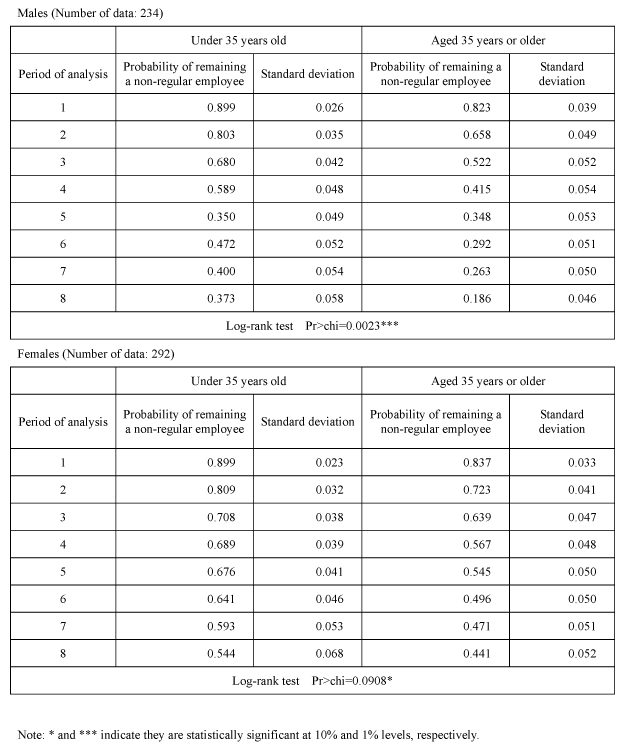Appended Note 3-3 Probability of Remaining a Non-Regular employee
- Japanese
- English
Among the persons surveyed who adopted non-regular employment style as their first job experience, with the Survey on Job and Education by the Cabinet Office, a survival analysis was conducted on those who change into another employment style within three years.
1. Method of analysis
The survival analysis is a test to validate how long an event, which means here that "a non-regular employee does not leave toward regular employment" continues. In specific, with Sakai and Iwamatsu (2004) as a reference, the Survey of Households' Attitude towards Employment, Income and Education by the Cabinet Office was used to obtain the survival curve by means of the Kaplan-Meier method which is a non-parametric estimation, and then, a log-rank test was conducted concerning whether or not there is a significant difference between the group under 35 years old and the group aged 35 years or older.
2. Result of analysis
According to the results of the survival analysis, it was found that, between the group under 35 years old and the group aged 35 years or older, there was a significant difference by 1% in men's groups and a significant difference by 10% in women's groups in the probability of leaving non-regular employment.

